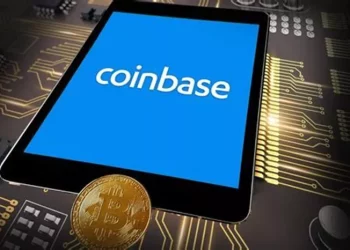Cryptocurrency exchanges have become a major player in the digital finance world, with Binance standing as one of the largest and most popular platforms globally. As a central hub for trading a wide range of cryptocurrencies, Binance has attracted millions of users due to its vast selection of services, competitive fees, and user-friendly interface. However, with the growing popularity of cryptocurrency comes an inherent risk associated with storing and trading digital assets. One of the key concerns for any cryptocurrency trader or investor is the security of their funds. In this article, we will explore the safety of Binance Wallet, examining its security features, potential vulnerabilities, and ways users can protect their assets.
An Overview of Binance Wallet
Binance offers a variety of wallets and storage solutions for its users. The most commonly used option is the Binance Exchange Wallet, which is integrated directly with the platform and allows users to store, trade, and withdraw a wide range of cryptocurrencies. Binance also offers users the option to transfer their assets to the Binance Chain Wallet, a decentralized wallet that is separate from the exchange itself.
The wallet on Binance is primarily a hot wallet, meaning it is connected to the internet and can be accessed easily. This is in contrast to cold wallets, which are offline and generally considered more secure. While hot wallets are convenient for frequent trading and quick access to funds, they are inherently more vulnerable to attacks since they are online. Therefore, understanding the security measures Binance employs to protect its wallet users is essential.
Security Features of Binance Wallet
Binance recognizes that security is a critical component of its operation and has taken significant steps to protect user funds. Some of the most important security features available to Binance wallet users include:
1. Two-Factor Authentication (2FA)
Two-Factor Authentication is one of the first layers of security that Binance employs. It requires users to provide two forms of identification to access their accounts, which greatly reduces the likelihood of unauthorized access. After entering a username and password, users must verify their identity by providing a code sent to their mobile device or email.
Binance supports multiple forms of 2FA, including Google Authenticator and SMS authentication. Google Authenticator is often considered more secure since it uses time-based one-time passwords (TOTP) that are generated on the user’s device and do not rely on potentially vulnerable SMS channels.
2. Cold Storage for Funds
Binance stores the majority of user funds in cold storage, which is a highly secure method of storing cryptocurrencies offline. Cold wallets are not connected to the internet, making them nearly immune to hacking attempts or other online threats. The exchange claims that over 90% of user funds are stored in cold storage to minimize exposure to security breaches.
This approach is essential because, while Binance may experience security risks, cold storage provides a safeguard by keeping the vast majority of funds inaccessible to hackers who target online wallets.
3. Security Audits and Insurance Fund
Binance conducts regular security audits to ensure that its systems are secure and up-to-date with the latest security standards. These audits check for potential vulnerabilities in the platform’s infrastructure and help Binance identify areas for improvement.
In addition to audits, Binance has created the Secure Asset Fund for Users (SAFU). This is an emergency insurance fund designed to protect users in case of a breach or hack. Binance sets aside 10% of its trading fees into the SAFU fund, which is used to compensate users in the event of a security breach that leads to a loss of funds.
The presence of such a fund demonstrates Binance’s commitment to user safety and its proactive approach to mitigating potential risks.
4. Advanced Encryption Protocols
Binance uses robust encryption protocols to protect user data and transactions. The exchange employs Secure Socket Layer (SSL) encryption, which ensures that all data transmitted between the user’s device and the Binance platform is encrypted and secure. This helps protect users from man-in-the-middle attacks and other data interception risks.
Additionally, the platform uses end-to-end encryption for sensitive information, such as withdrawal requests, to ensure that unauthorized users cannot alter or access transactions without the proper authorization.
5. Anti-Phishing Protection
Phishing attacks are one of the most common ways that hackers attempt to steal user credentials or funds. Binance provides users with several anti-phishing tools to help prevent this type of attack. For example, Binance allows users to set a custom anti-phishing code, which is displayed on all official Binance emails. This code is a unique identifier that can help users verify whether an email is truly from Binance or a phishing attempt.
Binance also provides guidance on how to identify phishing emails, further enhancing user awareness of potential scams.
6. Biometric Authentication
For users who want to enhance the security of their Binance wallet, the platform offers biometric authentication options, such as fingerprint and face recognition on mobile devices. These additional layers of protection are optional but offer an added level of security for users who prioritize safeguarding their funds.
7. Withdrawal Whitelists
Another valuable security feature offered by Binance is the ability to create a withdrawal whitelist. Users can set up a whitelist of cryptocurrency addresses that are authorized to receive withdrawals from their Binance account. This feature prevents hackers from transferring funds to unauthorized addresses in the event of a compromised account.
The withdrawal whitelist is a critical tool for users who store large amounts of cryptocurrency on Binance and want to minimize the risk of a potential breach.
Potential Vulnerabilities of Binance Wallet
Despite the extensive security measures implemented by Binance, no platform is entirely immune to risks. There are several potential vulnerabilities that users should be aware of when using Binance Wallet:
1. Hackers Targeting the Exchange
As one of the largest cryptocurrency exchanges in the world, Binance is a prime target for hackers. Although Binance has experienced high levels of security, there have been instances in the past where the platform was targeted by cybercriminals. In May 2019, Binance was hacked, resulting in the theft of over $40 million in Bitcoin from users’ wallets.
While Binance responded quickly and covered the loss from its SAFU fund, this incident serves as a reminder that even the most secure platforms can be vulnerable to attack. It’s important for users to remember that while Binance takes security seriously, external risks do exist.
2. Phishing Attacks
Phishing attacks continue to be one of the most prevalent threats for cryptocurrency users. Despite Binance’s efforts to provide anti-phishing protection, attackers are constantly evolving their techniques to trick users into revealing their private information.
Phishing scams can take many forms, such as fake websites, fraudulent emails, and social engineering tactics. Users must be vigilant when interacting with any communication that appears to come from Binance, ensuring that they are only using official channels and verified websites.
3. User Negligence and Weak Passwords
While Binance implements several security measures to protect users, it ultimately falls to the individual to maintain the security of their account. Weak passwords, for example, can easily be cracked by hackers using brute force attacks. It is essential for users to create strong, unique passwords for their Binance account, and to avoid using the same password across multiple platforms.
Furthermore, users should take care to regularly update their passwords and avoid reusing old ones.
4. Mobile Device Vulnerabilities
Binance offers mobile applications for both Android and iOS devices. While the app itself is secure, mobile devices are often targets for malware and other forms of attack. Users should be cautious when downloading apps from untrusted sources and ensure that their devices are protected with up-to-date antivirus software and security patches.
The mobile app also often features biometric authentication, which, while secure, could potentially be compromised if a user’s device is stolen or if proper security measures are not followed.
How to Improve the Safety of Your Binance Wallet
While Binance provides an array of security features to protect your funds, users must also take personal responsibility for enhancing the safety of their accounts. Here are some practical tips to further improve the security of your Binance wallet:
1. Enable Two-Factor Authentication
The first step in securing your Binance account is enabling two-factor authentication (2FA). This provides an added layer of security and makes it significantly harder for unauthorized users to access your account.
2. Use a Hardware Wallet for Long-Term Storage
For those who wish to hold significant amounts of cryptocurrency for the long term, using a hardware wallet is a highly recommended option. Hardware wallets, such as Ledger or Trezor, store cryptocurrencies offline and are not connected to the internet, providing an added layer of security against hacking attempts.
Binance allows users to transfer funds to and from hardware wallets, so you can keep your assets in a secure offline wallet while still taking advantage of Binance’s services when needed.
3. Keep Your Software Up to Date
Make sure that your device’s software, whether it’s your smartphone, computer, or any other device used to access Binance, is always up to date. Software updates often include security patches that protect against known vulnerabilities.
4. Be Cautious of Phishing Scams
Stay vigilant when checking emails or browsing websites. Only interact with communications that come from official Binance sources. Avoid clicking on links in unsolicited emails, and always verify that the website URL is correct before entering your login credentials.
5. Use Withdrawal Whitelists
Setting up a withdrawal whitelist ensures that only authorized addresses can withdraw funds from your Binance account. This feature is highly recommended for those who hold substantial amounts of cryptocurrency on the platform.
Conclusion
Overall, Binance offers a highly secure wallet solution for cryptocurrency users. The platform employs industry-standard security features, such as two-factor authentication, cold storage, encryption protocols, and insurance funds, to protect users from potential threats. However, like all online platforms, Binance is not immune to risks, and users must remain vigilant to keep their funds safe.
By taking advantage of Binance’s security features and following best practices for online security, users can significantly reduce the risk of theft or loss of funds. For those with large holdings or long-term investment strategies, using a hardware wallet in conjunction with Binance can offer an extra layer of security.
In the fast-evolving world of cryptocurrency, staying informed and proactive about security is essential for safeguarding your assets.
Related topics:

















